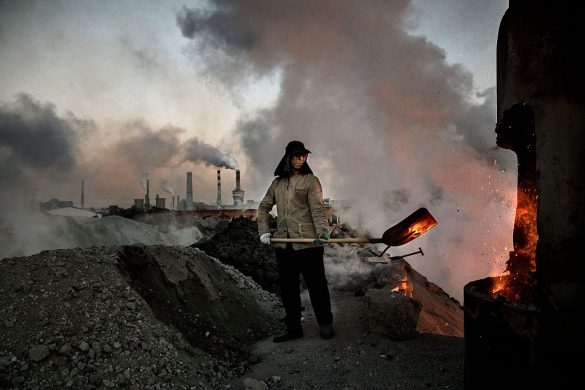Det fremgår af en presssemeddelelse fra International for Energy Economics and Financial Analysis:
Monday 15 August 2016 (IEEFA): China’s coal production was down 13.1% year on year (yoy) in the month of July 2016, and down 10.1% yoy in the seven months to July 2016, triple the rate of decline experienced in 2014 and 2015.
“The rate of transformation in China’s electricity sector continues to accelerate. Electricity demand has largely decoupled from economic activity, and China continues to diversify away from coal faster than anyone expected. China is well past peak coal,” said Tim Buckley, Director of Energy Finance Studies at the Institute for Energy Economics and Financial Analysis (IEEFA).
“This has global industry and climate change ramifications, given China produces and consumes half the world’s coal.”
Decoupling
China’s National Bureau of Statistics reports that industrial production in the January-July 2016 period was up 6.0% but electricity demand is up only 2.0% yoy – a sustained decoupling of electricity demand from economic activity.
This decoupling started in 2014, so we are now in the third year of this trend.
Within the overall electricity demand up 2.0% yoy, thermal power generation was down 1.9% yoy year to date (YTD).
So within subdued electricity demand, and despite the continued commissioning of 70GW of new coal fired capacity in 2015, China continues to use much less coal fired power generation.
Coal fired power generation is rapidly losing market share to hydro electricity (+13.2% yoy YTD), gas (+3.1% yoy YTD), nuclear (+24.5%), wind (+14.8%) and solar generation (+27.5% yoy YTD).
20 Gigawatts of solar installed
While solar’s contribution remains small in absolute terms, it was reported that more than 20 gigawatts (GW) of solar were installed in the first half of 2016 alone, well above the 15GW installed in the whole of 2015 (which was itself a world record at the time).
China’s total coal production was -10.1% with the 13.1% yoy drop in the month of July 2016, following a staggering 16.6% decline in the month on June 2016.
As such, the rate of decline in production and consumption continues to accelerate since peaking in 2013 (down 3% pa in 2014 and -4% 2015).
Policy moves are only accentuating this trend, with the Chinese government last month moving to ban the construction of new coal fired power plants countrywide, as the average Chinese thermal power plant utilisation rate hit a record low of 47.8% YTD July 2016.
Chinese coal consumption was down 5.1% yoy in the six months to June 2016.
“With production down double the rate of consumption, we are seeing a tightening of seaborne coal markets prices in the face of supply reductions falling faster than demand,” said Buckley.
Coal import rose 8,2%
Total Chinese coal imports rose 8.2% yoy in the six months to June 2016. The global traded thermal coal price has lifted 30% YTD in 2016 to US$65/t, reflective of significant cutbacks in Indonesian supply and rising Chinese imports near term in the face of accelerating and unexpectedly swift domestic coal curtailments.
The decoupling of electricity demand from economic growth overall (up 2% vs 6% yoy respectively) is clear in the very subdued heavy industry and materials sectors.
Flat glass demand is up 2.2% yoy while cement is up 2.8% while crude steel production is down 0.5% yoy. Against this, retail sales are still running at +10% yoy.
The deterioration in coal markets has had a significant impact on associated rail and port infrastructure operators. In July 2016 QINHUANGDAO PORT CO., LTD (the world’s largest coal port (moving 320Mt of coal in 2015)), put out a stock exchange notice warning that net profits in the six months to June 2016 would be down 80-90% yoy.
Stranded assets are intensifying
Likewise, the implications for the coal mining sector in China have been severe.
In July 2016 Datang International Power Generation, announced it had agreed to sell its hugely loss-making portfolio of coal, chemical and other heavy industrial businesses to its State Owned Enterprise parent, for a token 1 yuan, taking an 8 billion yuan writedown in the process.
The technology driven global electricity market transformation continues to accelerate. China is leading this process and stranded asset risks are intensifying as a result.















